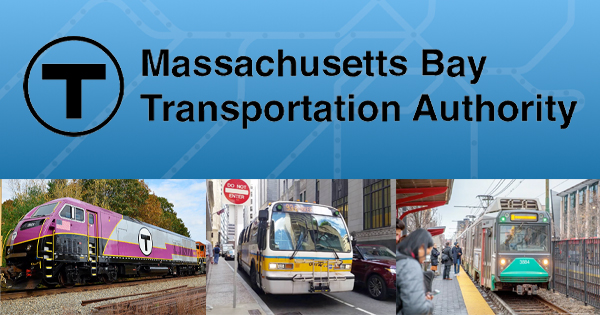
The MBTA today released its Capital Needs Assessment and Inventory (CNAI), an MBTA-led analysis conducted every 3-4 years to inventory the MBTA’s assets, understand the overall condition of the transit system, and identify assets that are not in a State of Good Repair in order to determine the level of investment needed to support the existing network.
“Restoring reliability and ensuring safety are priorities as we rebuild MBTA infrastructure. Understanding and acknowledging the significant resources needed to bring our system to a State of Good Repair is just one step towards fixing our infrastructure to deliver more robust and frequent service. The MBTA is one of the oldest transit agencies in the country, and while there are a number of contributing factors, it’s clear that years of underinvestment have added to the cost of bringing our system back to a state of good repair,”said MBTA General Manager and CEO Phillip Eng. “Timely and appropriate actions are key to mitigating and avoiding more costly and potentially impactful efforts. Know that we are committed to aggressively addressing our immediate needs – like the recent 16-day outage on the Ashmont Branch to perform track work – as we strive to deliver a modernized system to serve future generations.”
The MBTA is among the oldest and most complex transit agencies in the United States with some assets that date back more than 50 years. All MBTA assets – facilities, vehicles, infrastructure, and more – have varying expected useful lives and all assets eventually require rehabilitation or replacement on a rolling basis. State of Good Repair (SGR) does not indicate the level of safety, but rather is representative of an asset operating at its optimal and expected level of performance. An asset “out of SGR” is more likely to require rehabilitation or replacement.
The CNAI is an exercise that helps the MBTA understand the magnitude of assets needs across the system at a single point in time. The SGR Index is calculated as part of the CNAI and aims to capture the baseline condition and estimated value for all assets that have been identified as out of SGR. While it does not reflect total project costs or the totality of capital investment that may be needed, both the CNAI and SGR Index help the MBTA develop strategies about where to allocate funding resources and make investments toward a modernized transportation network as part of the MBTA’s rolling five-year Capital Investment Plan (CIP). In the MBTA’s FY24-28 CIP process, State of Good Repair and Safety were the most important prioritization factors, making up half of a project’s total weighted score.
The MBTA estimates the current overall SGR Index for assets in need of rehabilitation or replacement to be approximately $24.5 billion. This estimate includes:
- Facilities: $6.4 billion (35% of assets)
- Rolling Stock: $2.4 billion (55% of assets)
- Equipment: $52 million (28% of assets)
- Structures: $5.3 billion (22% of assets)
- Signals – CR: $1.3 billion (80% of assets)
- Signals – Transit: $753 million (53% of assets)
- Track – CR: $1.2 billion (9% of assets)
- Track – Transit: $2.0 billion (89% of assets)
- Power: $5.1 billion (76% of assets)
This estimated figure is an increase of $14.5 billion from the last CNAI performed in 2019 and is driven by a number of factors, including:
- a more robust, comprehensive, and data-driven inventory approach that significantly increases the total asset count from approximately 59,000 to nearly 83,700. For example, the MBTA’s power asset count significantly increased from 4,959 in the 2019 to 14,514 in 2023 because the previous inventory did not include certain cables, overhead catenary, the South Boston power station, emergency generators, or high voltage yards. A more sophisticated inventory of these assets is now included in the 2023 CNAI;
- significant infrastructure and construction cost increases driven by inflation and supply chain challenges;
- the continued aging of the MBTA’s assets faster than they are being replaced due to years of underinvestment; and
- the length of time for capital investments to show improvements and be reflected in the CNAI. Many capital projects underway now are in varying planning, design, and construction phases. The rehabilitation or replacement of those assets will be reflected in future iterations of the CNAI and SGR Index. Additionally, the cutoff for data to be included in this year’s CNAI was in 2021 and some major investments since that time were not captured in this iteration of the CNAI.
The MBTA is already addressing many of the needs identified in the CNAI. For example, critical track work on the Red Line’s Ashmont Branch and Mattapan Line was successfully completed over the course of a 16-day shuttle bus diversion in late October 2023 in which crews replaced nearly 5,000 feet of rail and 1,174 ties on the Ashmont Branch and nearly 4,700 feet of rail and 1,380 ties on the Mattapan Line, allowing for the removal of all speed restrictions in that area; 83 new bi-level Commuter Rail coach cars are currently underway to replace the existing fleet and increase system capacity; and Positive Train Control (PTC) implementation continues to advance on the Commuter Rail signal system.
Peer transit agencies across the country have launched similar exercises to identify and address their SGR needs.
Understanding the MBTA’s SGR needs and the level of investment required to address them is a critical step toward improving the system. The MBTA is currently working to incorporate the findings of the CNAI into the capital project pipeline. The Asset Management and Capital Program Planning Departments are working together to institutionalize the use of condition, criticality, and risk scores to strengthen project development processes and capital investment decision-making. The Asset Management Department also continues to develop the asset inventory and build out additional data complexity to support ongoing analyses of the MBTA’s capital needs. Ongoing and sustainable future capital funding sources will also be required to support safe and reliable service.
For more information, visit mbta.com or connect with the T on X (the site formerly known as Twitter) @MBTA and @MBTA_CR, Facebook /TheMBTA, Instagram @theMBTA, Threads @thembta, or TikTok @thembta.
The above press release was submitted to us by the MBTA.
If you have a news story that you would like to share, please contact us via email or call 781-780-9460.

